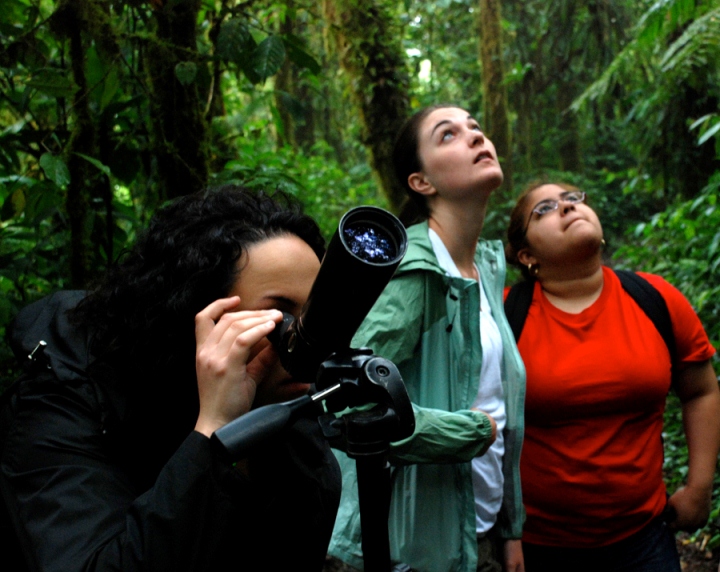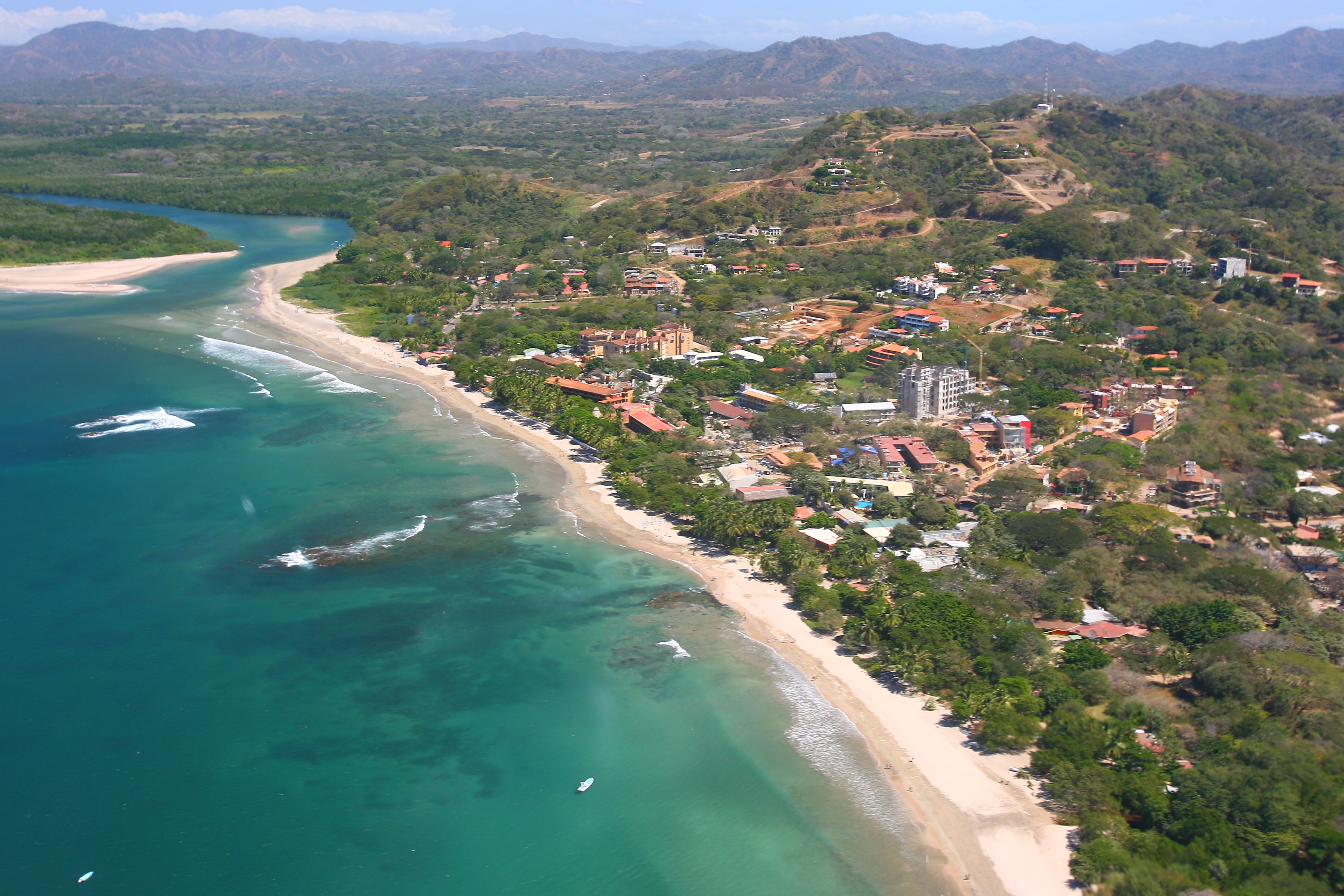Costa Rica Travel News – Lately, everywhere I go; the gym, the grocery store, and even out to restaurants here in the states, I hear people discussing their recent trip to Costa Rica, future plans to visit Costa Rica, or classes they will be taking in Costa Rica. This is how Mexico used to be spoken about when people flocked there for an inexpensive vacation or to go party for spring break. Due to the recent drug problems in Mexico and continued violence, people started to feel unsafe to go and vacation there. So…move over Mexico, and Hello Costa Rica!
 However, due to this increased vacationing in Costa Rica, I was wondering about the impact this increase is having on the country. Mexico is a country that is 761,600 square miles while Costa Rica is only 19,730 square miles. Obviously, Mexico has more space to build and longer coastlines so what is the impact on Costa Rica?
However, due to this increased vacationing in Costa Rica, I was wondering about the impact this increase is having on the country. Mexico is a country that is 761,600 square miles while Costa Rica is only 19,730 square miles. Obviously, Mexico has more space to build and longer coastlines so what is the impact on Costa Rica?
In 1988 Costa Rica had between 329,386 and 400,600 foreign tourists (records weren’t kept very well at that time), then during 2013, 2,427,941 tourists arrived, according to a report from the state tourism agency. This is an increase of roughly 585% in 25 years.
Let’s look at the positive impacts of tourism first. In Costa Rica, tourism has significantly contributed to conservation of the biological diversity and restoration of the natural resources. The creation of national parks, wildlife reserves and private land holdings are helping protect these valuable assets and allowing them to thrive. Regulatory measures have become necessary to control the negative impacts of tourism in the protected areas. Controlling activities so that the habitats can be sustained has become a critical part of protecting these regions. Observers claim that the Osa Peninsula has been a model for low-impact eco-tourism which could change if a proposal of an international airport for easy access by tourists comes to fruition.
Let’s examine some of the challenges of this increased tourism in Costa Rica. This country has been a leader in developing a low-impact ecotourism model. However, during the last decade with this astronomical increase in tourism, (mostly perceived in the Guanacaste region (north Pacific)) where developments of huge “all-inclusive” resorts have replaced the more traditional low impact hotels. This has resulted in a clear conflict with nature and with the country’s original model of sustainable tourism. When allowing outside countries to come in without clear guidelines of building for tourism, then the bottom line of making money becomes the motivator and trumps the eco-tourism which brought people in the first place. After the construction of Guanacaste’s international airport, a study was performed by the Center for Responsible Travel (CREST) and identified this airport as the main catalyst for real estate boom. The study focused on the tourism impacts in Guanacaste and found that the lack of appropriate land use planning and improvisation led to uncontrolled growth that has had environmental and social repercussions. The previously little-known Guanacaste province is now only three hours from Miami. The decrease in flora and fauna has been noticeable. Local communities have also been affected by the “privatization” of some beaches and mega-resorts compete with communities for water, electricity and other resources.
With tropical sunshine, sandy beaches and surf, developers saw a chance to attract everyone from surfers and honeymooners to U.S. retirees seeking a second home. They transformed sleepy towns. The result is rampant construction that environmentalists fear could balloon into noisy, sprawling resorts with cruise ship ports and golf courses like those of Cancun, Mexico, which guzzle water and pollute the environment. Already, Costa Rica has lost up to half of its monkey population in the last 12 years as developers expand into their jungle habitat, according to scientists at the University of Costa Rica. Light pollution from Tamarindo is making life harder for leatherback turtles. The town’s lights disorient the tiny hatchlings, sending them toward the luminescence instead of out to sea, where they are safer from predators.
So, with all the sacrifices that the eco-system seems to be sustaining during this huge tourism increase, at least it is bringing in money to the local economy right? That is what one Canadian developer thought.
“It’s been good for the locals. Most of them are happy to have good, decent jobs,” said Denise Shante, 51, a Canadian property broker who sells apartments priced up to $2.5 million.
Well, tourists spent US $164 million in 2013, and the poverty rate was 20.7%. Is this an increase or decrease in the local poverty rate? Well, disturbingly, inequality has risen in the last decade in Costa Rica as noted by Figure 1 below.
Costa Rica’s poor performance in social indicators comes despite having a multitude of programs to fight poverty. There is something wrong with an economic model that produces robust economic growth but is unable to lower the poverty rate. This tourism boom apparently has not helped the local population when most of the development is coming from countries outside of Costa Rica and is intended to boost foreign banks rather than the local population.
Costa Rica must not forget that its tourism industry grew because the country has some of the world’s most incredible natural treasures. The issue is a familiar one in developing countries as they weigh the benefits of tourist dollars that come with high-rise hotels against the loss of greenery when virgin land is paved over. Costa Rica has the responsibility, then, to nurture and protect these gems. This conflict in the tourism model is not about developing versus not developing. It is about clearly defining the model that Costa Ricans want to adopt.
So, apparently Costa Rica is sacrificing the land and it isn’t lining the pockets of the local population with money, but instead the poverty rate is stagnant while the tourism boom goes on. “Costa Rica can no longer project the pure image of an eco-tourism paradise since reality shows investors are free to develop more and more projects without clear rules,” the Costa Rican Hotel and Resorts Association warned in a report in May. The Costa Rican Chamber of Construction says unregulated building is still going on.
By Stacey Dunahay


